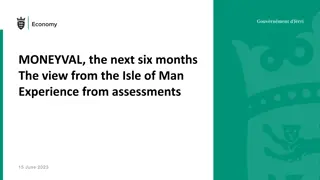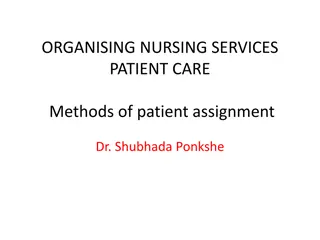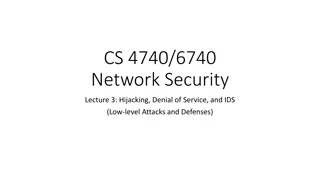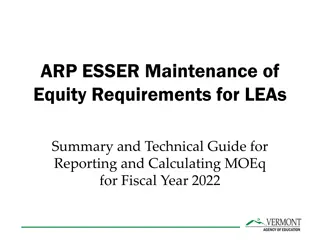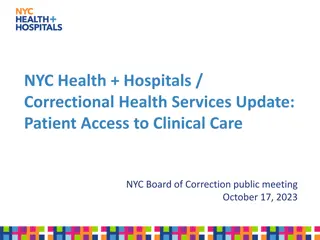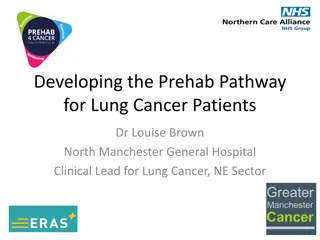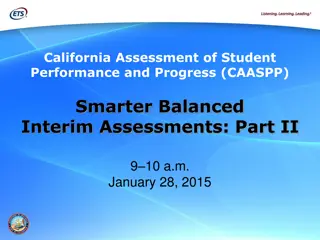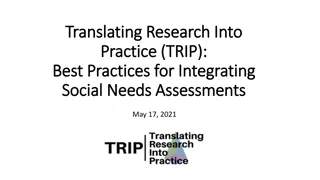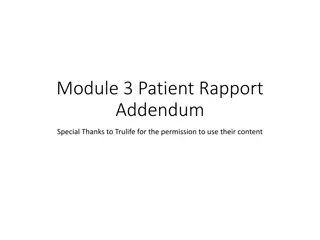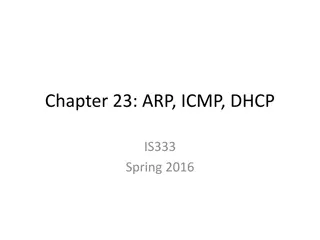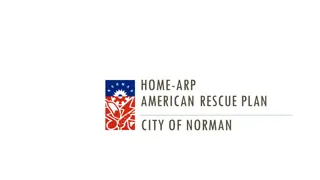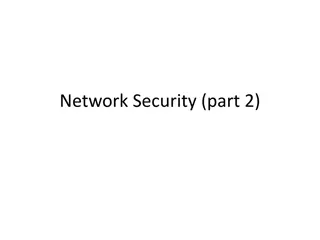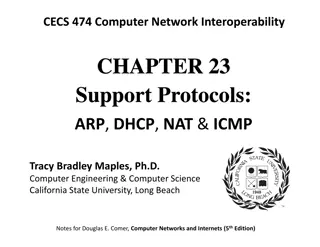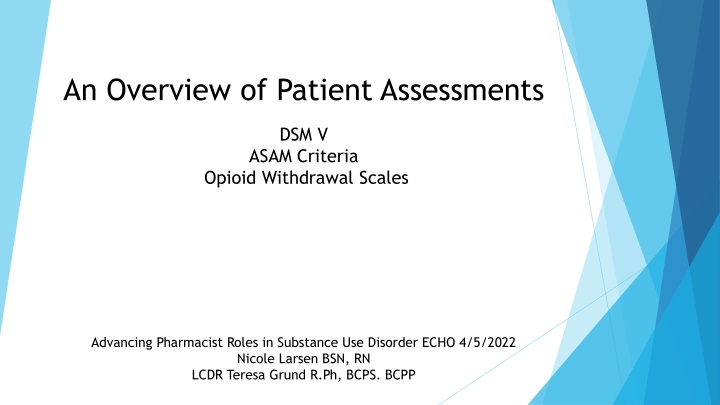
Comprehensive Guide to Patient Assessments, DSM-V Criteria, and Opioid Withdrawal Scales
Gain insights into patient assessments, DSM-V criteria for opioid use disorder, ASAM dimensions, and opioid withdrawal scales. Explore tools for assessing opioid use disorders and learn about guiding principles for treatment decisions.
Download Presentation

Please find below an Image/Link to download the presentation.
The content on the website is provided AS IS for your information and personal use only. It may not be sold, licensed, or shared on other websites without obtaining consent from the author. If you encounter any issues during the download, it is possible that the publisher has removed the file from their server.
You are allowed to download the files provided on this website for personal or commercial use, subject to the condition that they are used lawfully. All files are the property of their respective owners.
The content on the website is provided AS IS for your information and personal use only. It may not be sold, licensed, or shared on other websites without obtaining consent from the author.
E N D
Presentation Transcript
An Overview of Patient Assessments DSM V ASAM Criteria Opioid Withdrawal Scales Advancing Pharmacist Roles in Substance Use Disorder ECHO 4/5/2022 Nicole Larsen BSN, RN LCDR Teresa Grund R.Ph, BCPS. BCPP
No conflicts of interest No financial disclosures
Objectives Identify 3 criteria in the DSM V for diagnosing an Opioid Use Disorder Identify 3 dimensions from the ASAM criteria Identify mild, moderate, and severe opioid withdrawal based on the Clinical Opioid Withdrawal Scale (COWS) Identify the mild, moderate, and severe opioid withdrawal based on the Subjective Opioid Withdrawal Scale (SOWS)
Tools for assessing Opioid Use Disorders DSM V Criteria Diagnostic Clinician Least intensive treatment service American Society of Addiction Medicine Criteria Objective standards Clinical Opioid Withdrawal Scale Clinician Brief Subjective Opioid Withdrawal Scale Brief Patient
DSM V Criteria for Diagnosing Substance Use Disorders 1. Hazardous use 2. Social or interpersonal problems related to use 3. Neglected major roles to use 4. Withdrawal 5. Tolerance 6. Repeated attempts to control use or quit 7. Used larger amounts/longer 8. Much time spent using 9. Physical or psychological problems related to use 10.Activities given up to use 11.Craving
Two or more of these criteria within a 12-month period Two or three of the criteria = mild substance use disorder Four to five= moderate substance use disorder Six or more criteria= severe substance use disorder
Guiding Principles of The ASAM Criteria Consider the whole person. Design treatment for the specific patient. Individualize treatment times. Reconceptualize the definition of addiction. Failure is not a treatment prerequisite. Provide a spectrum of services
Using the Criteria to Make Decisions About Care Providing/ Evaluating Assessing Identifying
Assessing WHAT DOES THE PATIENT WANT? WHY NOW? DOES THE PATIENT HAVE ANY IMMEDIATE NEEDS? ASSESS RISKS, NEEDS, AND STRENGTHS IN ALL LIFE AREAS IDENTIFY ANY DIAGNOSES
Dimension 1: Acute Intoxication and/or Withdrawal Potential Dimension 2: Biomedical Conditions/Complications Dimension 3: Emotional/Behavioral /Cognitive Conditions and Complications Dimension 4: Readiness to Change Dimension 5: Relapse/Continued Use/Continued Problem Potential Dimension 6: Recovery Environment
Identifying IDENTIFY THE SEVERITY AND LEVEL OF FUNCTIONING IDENTIFY WHICH LIFE AREAS ARE CURRENTLY MOST IMPORTANT DETERMINE TREATMENT PRIORITIES CHOOSE A SPECIFIC FOCUS AND TARGET FOR EACH PRIORITY LIFE AREA WHAT SPECIFIC SERVICES ARE NEEDED FOR EACH LIFE AREA?
Providing/Evaluating IDENTIFY THE INTENSITY OF SERVICES NEEDED FOR EACH LIFE AREA IDENTIFY WHERE THESE SERVICES CAN BE PROVIDED, IN THE LEAST INTENSIVE BUT SAFE LEVEL OF CARE WHAT IS THE PROGRESS OF TREATMENT?
Establishes what intensity Identify services Identify priorities
Clinical and Subjective Opioid Withdrawal Scales
COWS Scoring Score: 5- 1 2 = mild 13-24 = moderate 25-36 = moderately severe > 36 = severe
SOWS Scoring The Subjective Opiate Withdrawal Scale (SOWS) consist of 16 symptoms rated in intensity by patients on a 5-point scale of intensity as follows: 0=not at all 1=a little 2=moderately 3=quite a bit 4=extremely. The total score is a sum of item ratings, and ranges from 0 to 64. Mild Withdrawal is considered to be a score of 1 - 10. Moderate withdrawal is considered to be a score of 11 - 20 Severe withdrawal is considered to be 21 - 30.
References: https://dsm-psychiatryonline- org.proxy.library.vcu.edu/doi/full/10.1176/appi.books.9780890425787.x16_Su bstance_Related_Disorders https://www.verywellmind.com/what-are-the-official-criteria-for-addiction- 22493 https://elearning.asam.org/products/the-asam-fundamentals-of-addiction- medicine-40-hour-cme-program-online https://nida.nih.gov/sites/default/files/ClinicalOpiateWithdrawalScale.pdf https://www.asam.org/docs/default-source/education-docs/sows_8-28- 2017.pdf


